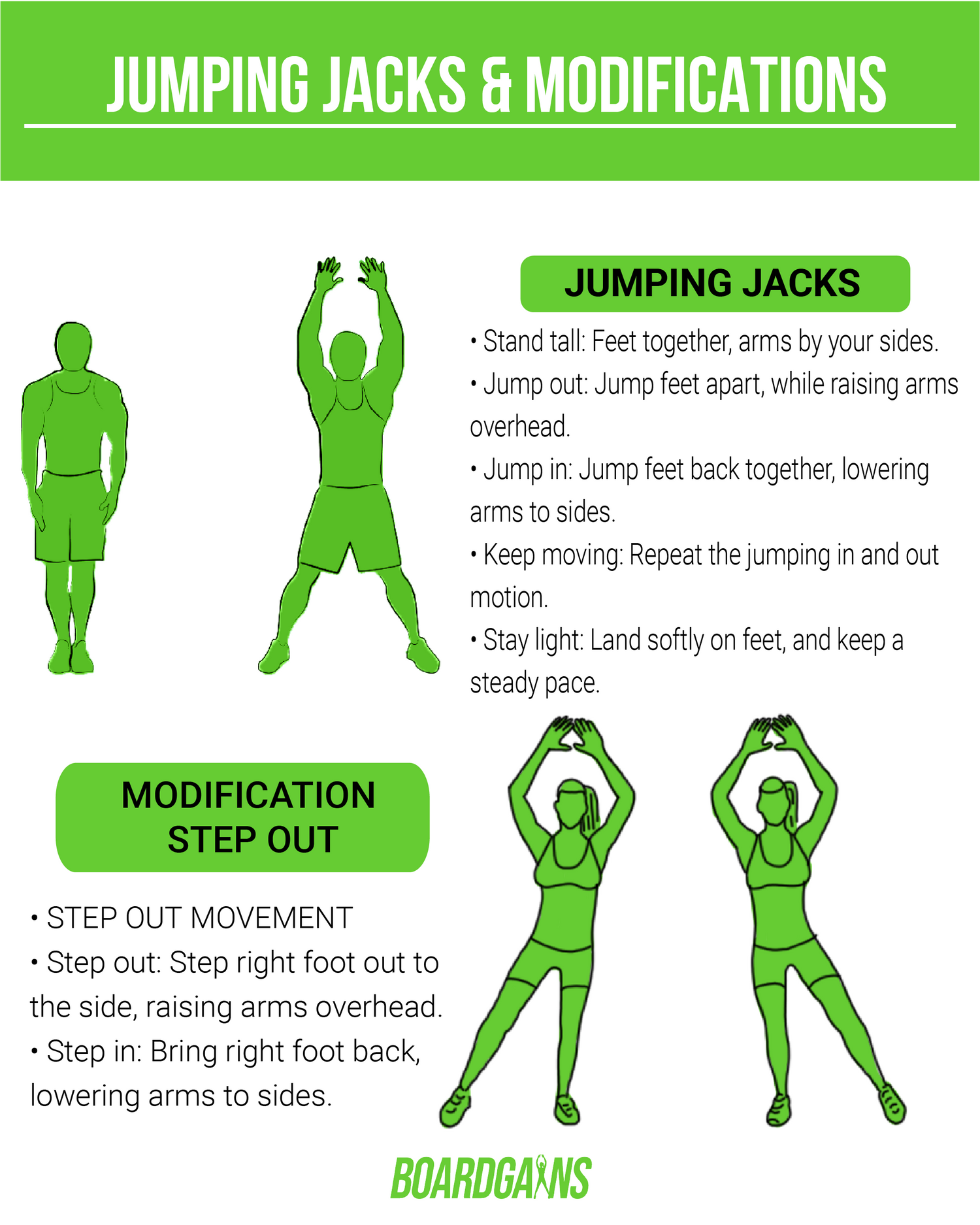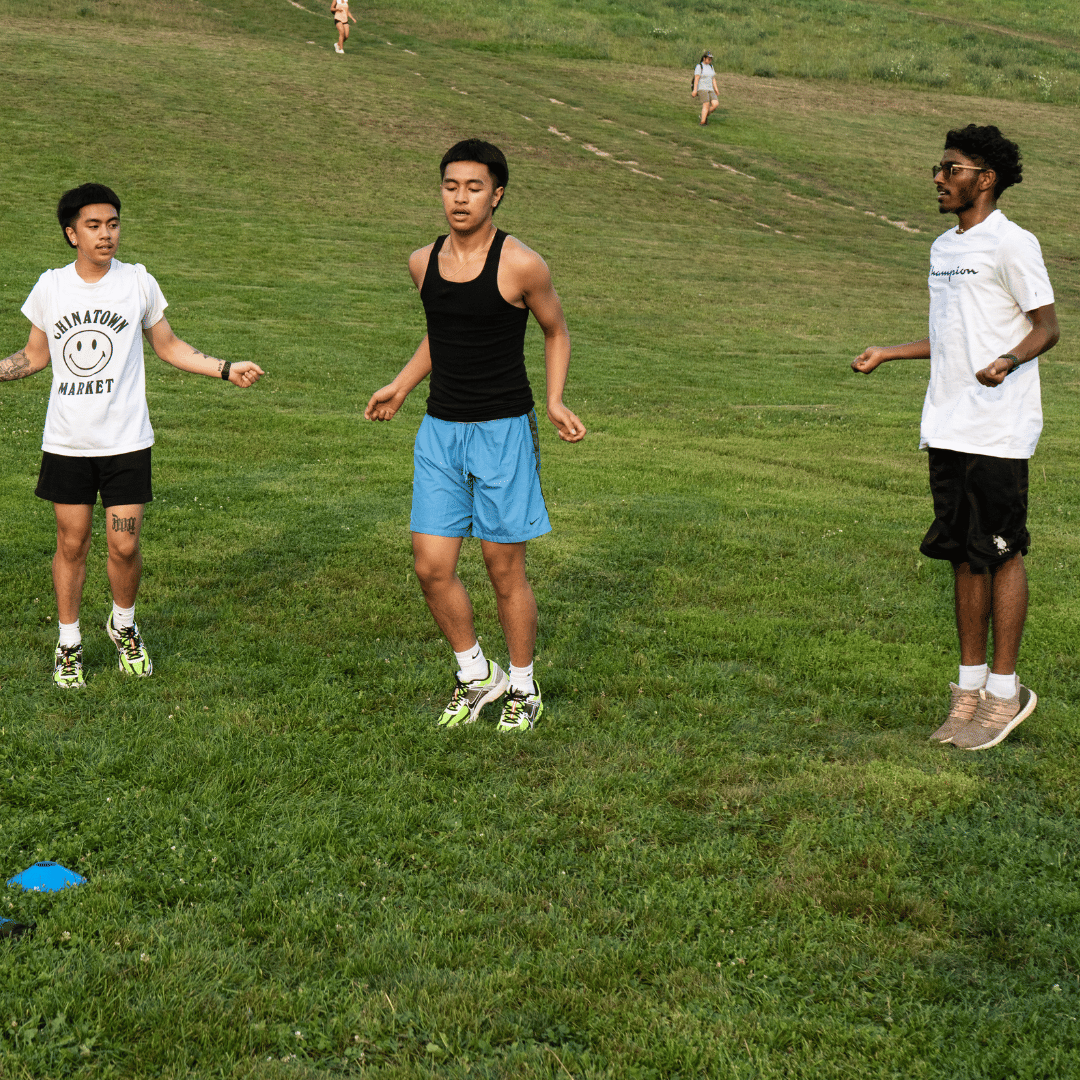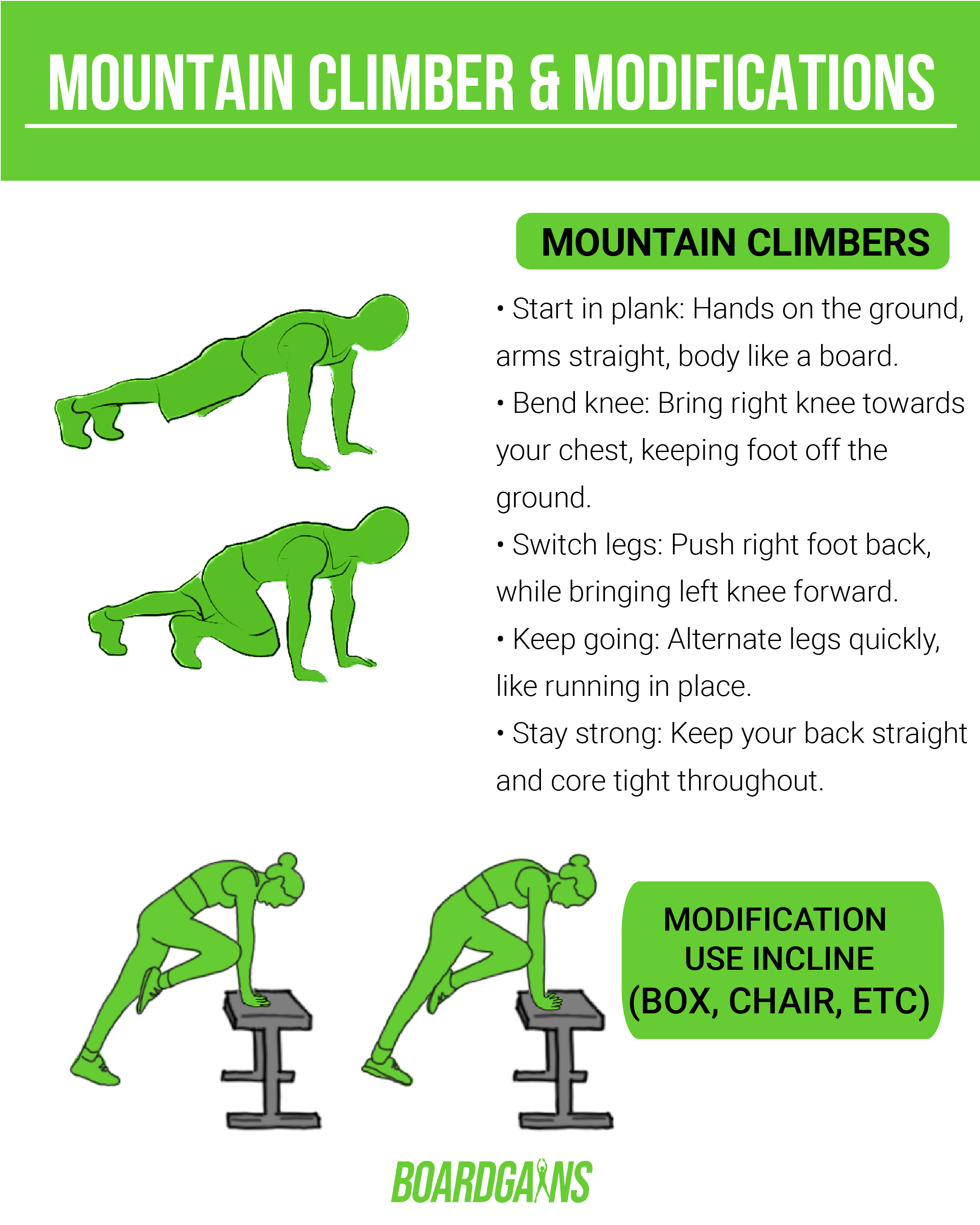Jumping jacks are an excellent cardiovascular exercise that can help you burn calories, improve your endurance, and strengthen your muscles. They are a simple and effective exercise that can be done anywhere, anytime, without any equipment. However, many people perform jumping jacks incorrectly, which can lead to injuries or ineffective workouts. In this article, we will provide a step-by-step guide on how to perform jumping jacks properly, correct common mistakes, and provide variations to help you spice up your routine. At Boardgains, we love incorporating this fun and challenging exercise into our fitness board game.
Benefits of Jumping Jacks
Jumping jacks are a great exercise for improving cardiovascular fitness, coordination, and muscle tone. Here are some of the benefits of adding jumping jacks to your workout routine:
- Burn calories: Jumping jacks are a high-intensity exercise that can help you burn calories and lose weight.
- Increase endurance: Jumping jacks can help you build endurance and stamina, allowing you to exercise for longer periods without feeling tired.
- Improve coordination: Jumping jacks require coordination between your upper and lower body, helping you improve your balance and coordination.
- Strengthen muscles: Jumping jacks can help you strengthen your leg muscles, core, and upper body, including the shoulders and arms.
- Reduce stress: Jumping jacks are a fun and energetic exercise that can help you relieve stress and improve your mood.
Correct Form for Jumping Jacks
To perform jumping jacks correctly, follow these steps:
Starting Position
- Stand upright with your feet together and your arms at your sides.
- Engage your core muscles by drawing your navel toward your spine.
- Relax your shoulders and keep your chest lifted.
Jumping Motion
- Jump up and spread your legs apart, slightly wider than shoulder-width apart.
- At the same time, raise your arms above your head, so your hands almost touch.
- Keep your knees slightly bent and your feet pointed straight ahead.
Landing Position
- Jump again and return to the starting position with your feet together and your arms at your sides.
- Land gently on the balls of your feet, then roll back onto your heels.
- Keep your knees slightly bent to absorb the impact.
Common Mistakes to Avoid
Here are some common mistakes to avoid when performing jumping jacks:
Incorrect Form
- Allowing your knees to lock out when you land, which can put pressure on your joints.
- Hunching your shoulders or collapsing your chest, which can reduce the effectiveness of the exercise.
- Failing to engage your core muscles, which can lead to back pain.
Overexertion
- Pushing yourself too hard, too fast, which can lead to fatigue or injury.
- Failing to warm up properly, which can increase the risk of injury.
- Doing too many repetitions without taking a break, which can cause muscle fatigue and strain.
Impact on Joints
- Landing too hard on your heels, which can cause jarring impact on your joints.
- Jumping too high, which can also put extra pressure on your joints.
Variations of Jumping Jacks
Here are some variations of jumping jacks to help you add variety to your routine:
Plyometric Jumping Jacks
- Similar to regular jumping jacks, but with a more explosive jump that requires more power and coordination.
- As you jump up, spread your legs apart and clap your hands above your head before returning to the starting position.
Cross Jacks
- Start with your feet together and arms at your sides.
- Jump and cross your right foot over your left, while crossing your arms in front of your chest.
- Jump again and return to the starting position.
- Repeat the movement, this time crossing your left foot over your right and your arms behind your back.
Half Jacks
- Similar to regular jumping jacks, but instead of jumping and spreading your legs apart, simply step your right foot out to the side while raising your right arm.
- Return to the starting position, then repeat the movement with your left leg and arm.
Seal Jacks
- Start with your feet together and arms at your sides.
- Jump and spread your legs apart while clapping your hands in front of your body.
- Jump again and return to the starting position.
Tips for Jumping Jacks
Here are some tips to help you get the most out of your jumping jack workout:
Warm-Up
- Before starting your jumping jack routine, warm up with some light cardio exercises like jogging in place or jumping jacks at a slower pace.
Breathing
- Breathe in deeply as you jump up and exhale as you land back down.
Tempo
- Start with a slower pace and gradually increase the speed as you get comfortable with the movement.
Repetition
- Start with a few repetitions and gradually increase the number of jumping jacks as you build up your endurance.
Conclusion
Jumping jacks are a fun and effective exercise that can help you burn calories, improve your endurance, and strengthen your muscles. By following the correct form, avoiding common mistakes, and adding variations to your routine, you can maximize the benefits of this simple yet powerful exercise.
FAQs
- Can jumping jacks help me lose weight?
- Yes, jumping jacks are a high-intensity exercise that can help you burn calories and lose weight.
- How many jumping jacks should I do each day?
- The number of jumping jacks you should do each day depends on your fitness level and goals. Start with a few repetitions and gradually increase the number as you build up your endurance.
- Are jumping jacks bad for your knees?
- Jumping jacks are generally safe for your knees, as long as you follow the correct form and avoid overexertion.
- Can I do jumping jacks if I have a bad back?
- Jumping jacks can be challenging for people with a bad back. Consult with a doctor or physical therapist to determine if jumping jacks are safe for you.
- Can I do jumping jacks if I have joint pain?
- Jumping jacks can be hard on your joints, especially if you land too hard or jump too high. Consider low-impact exercises like walking or swimming if you have joint pain.










Leave a comment
This site is protected by hCaptcha and the hCaptcha Privacy Policy and Terms of Service apply.